Latex Straightjacket Body
£246.40*
Delivery time: 7-9 weeks
Add latex care
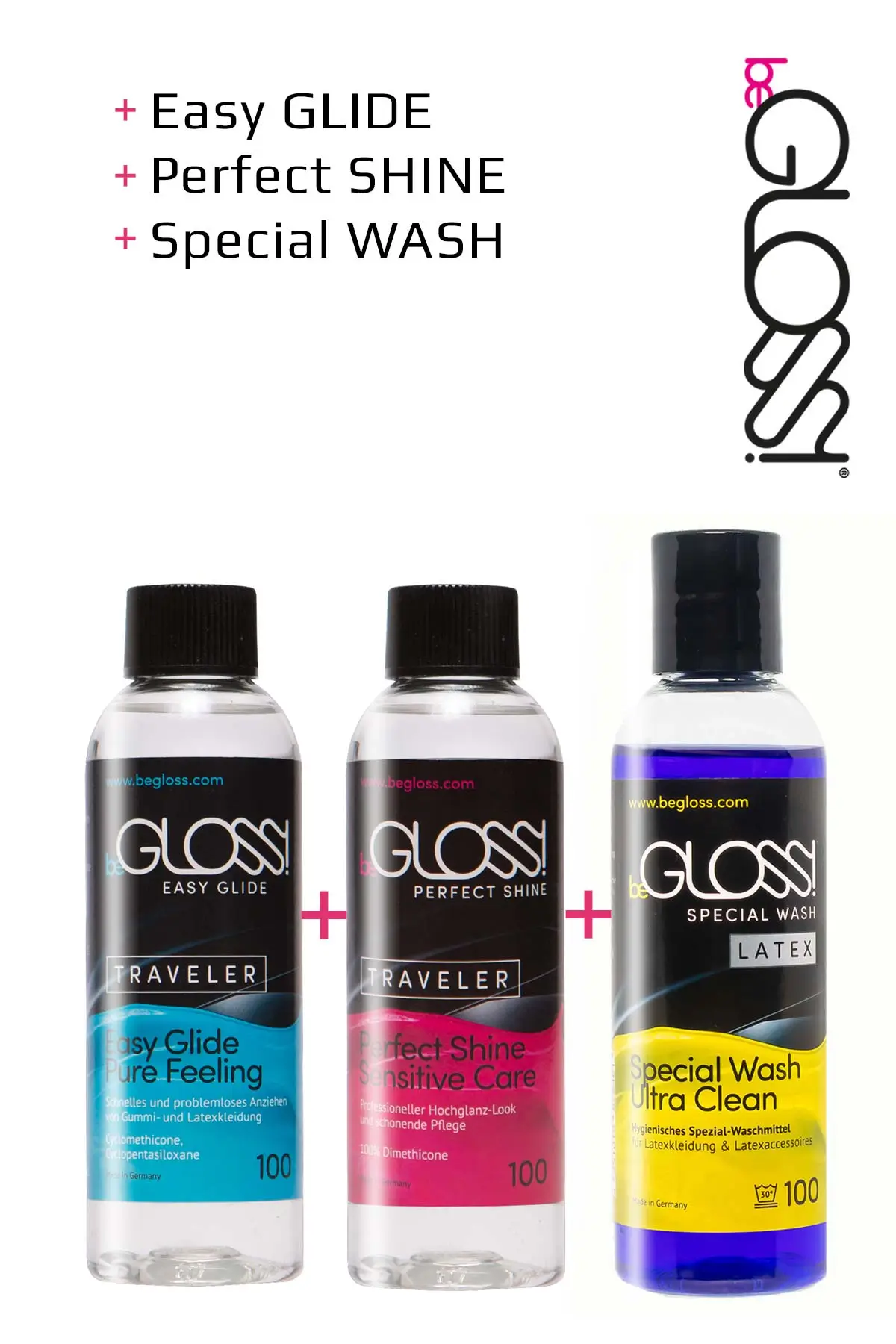
BeGloss SET 4 - Shine 100 ml -Glide 100 ml - Wash 100 ml
Content: 0.1 litre (£237.00* / 1 litre)
£23.70*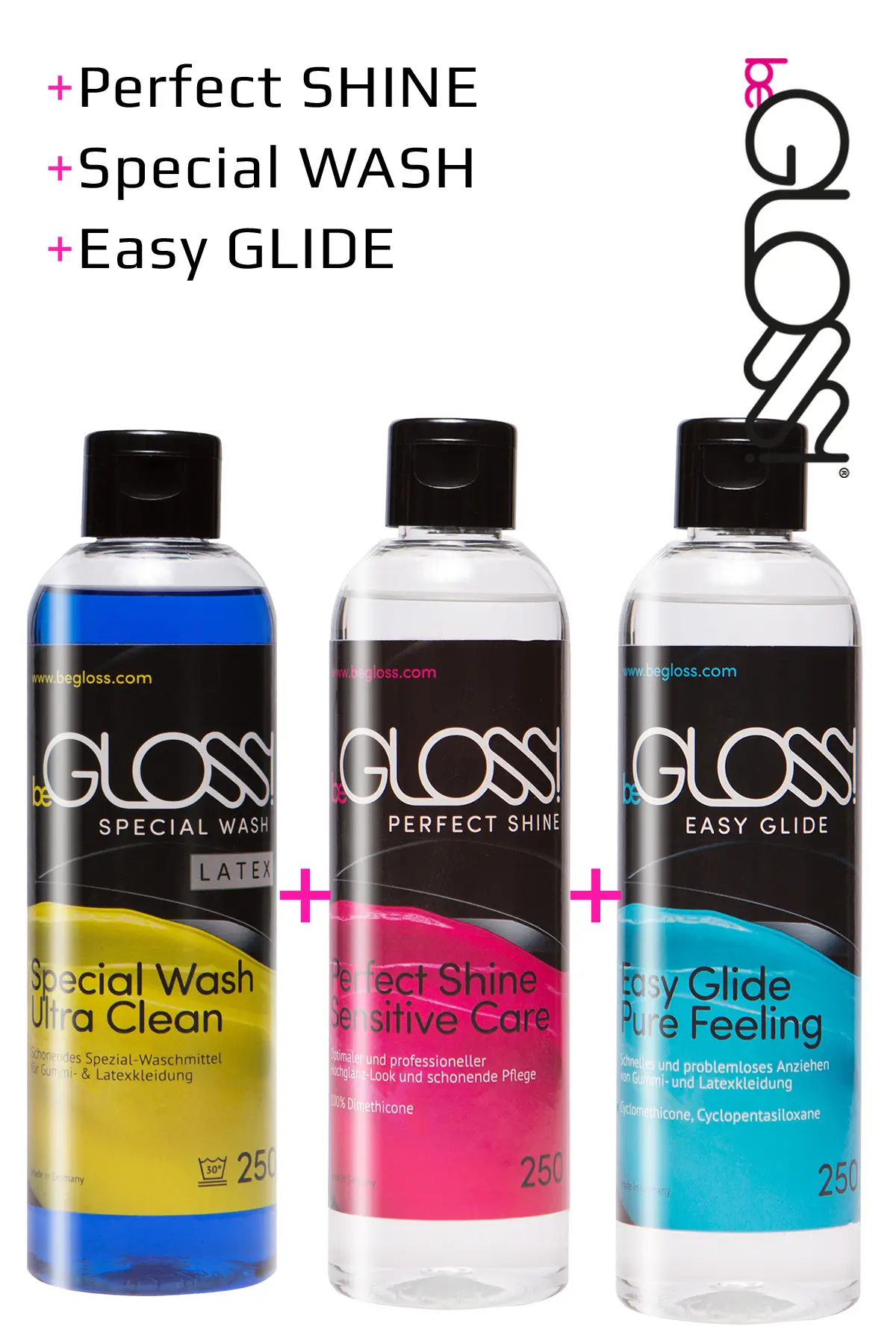
BeGloss SET 1 - Shine 250 ml - Glide 250 ml - Wash 250 ml
Content: 0.75 litre (£56.53* / 1 litre)
£42.40*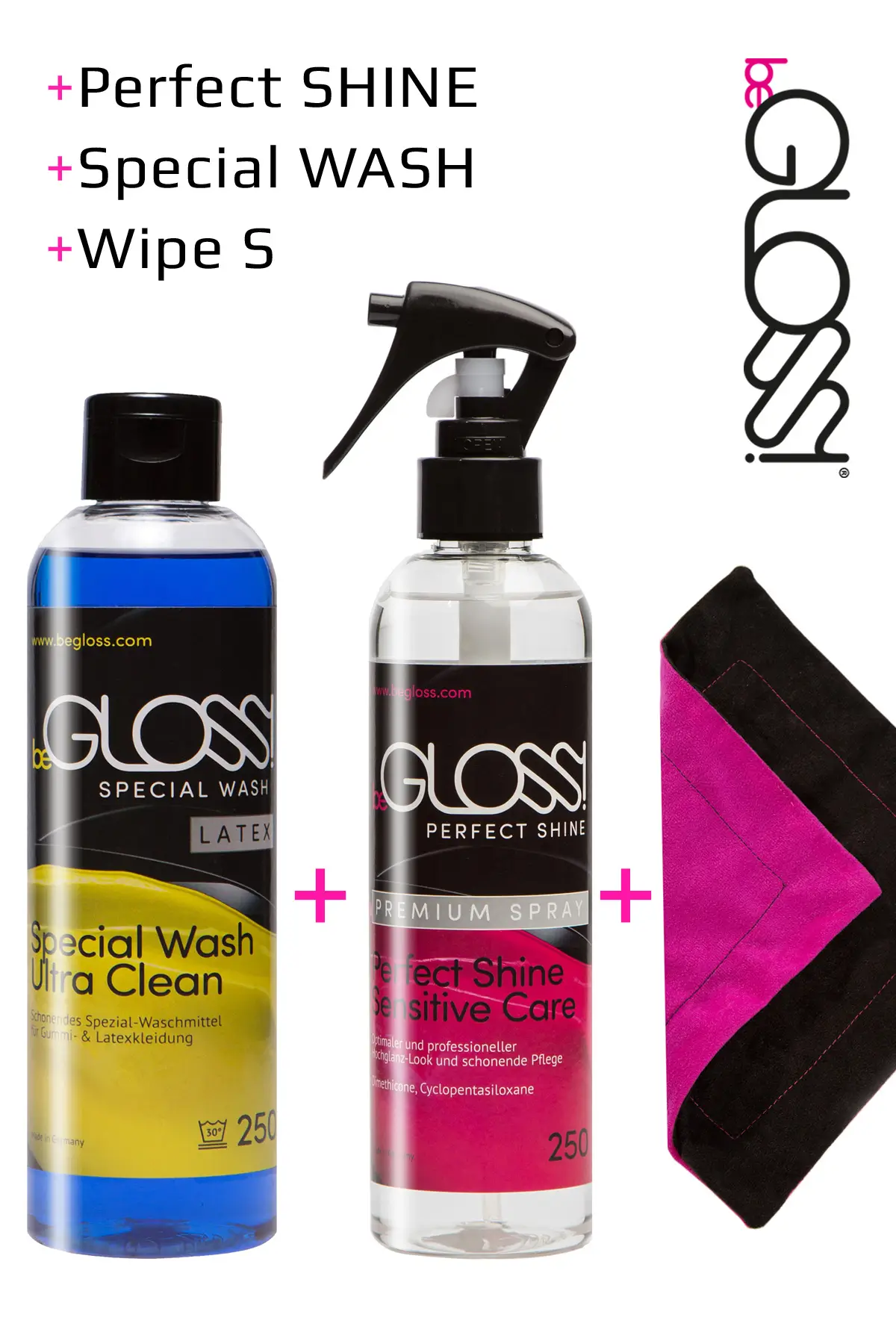
BeGloss Set 2 - Shine 250 ml Spray - Wash 250 ml - Wipe
Content: 0.75 litre (£54.27* / 1 litre)
£40.70*
BeGloss Set 3 - Shine 250 ml Spray - Glide 250 ml Spray - Wash 250 ml
Content: 0.75 litre (£73.60* / 1 litre)
£55.20*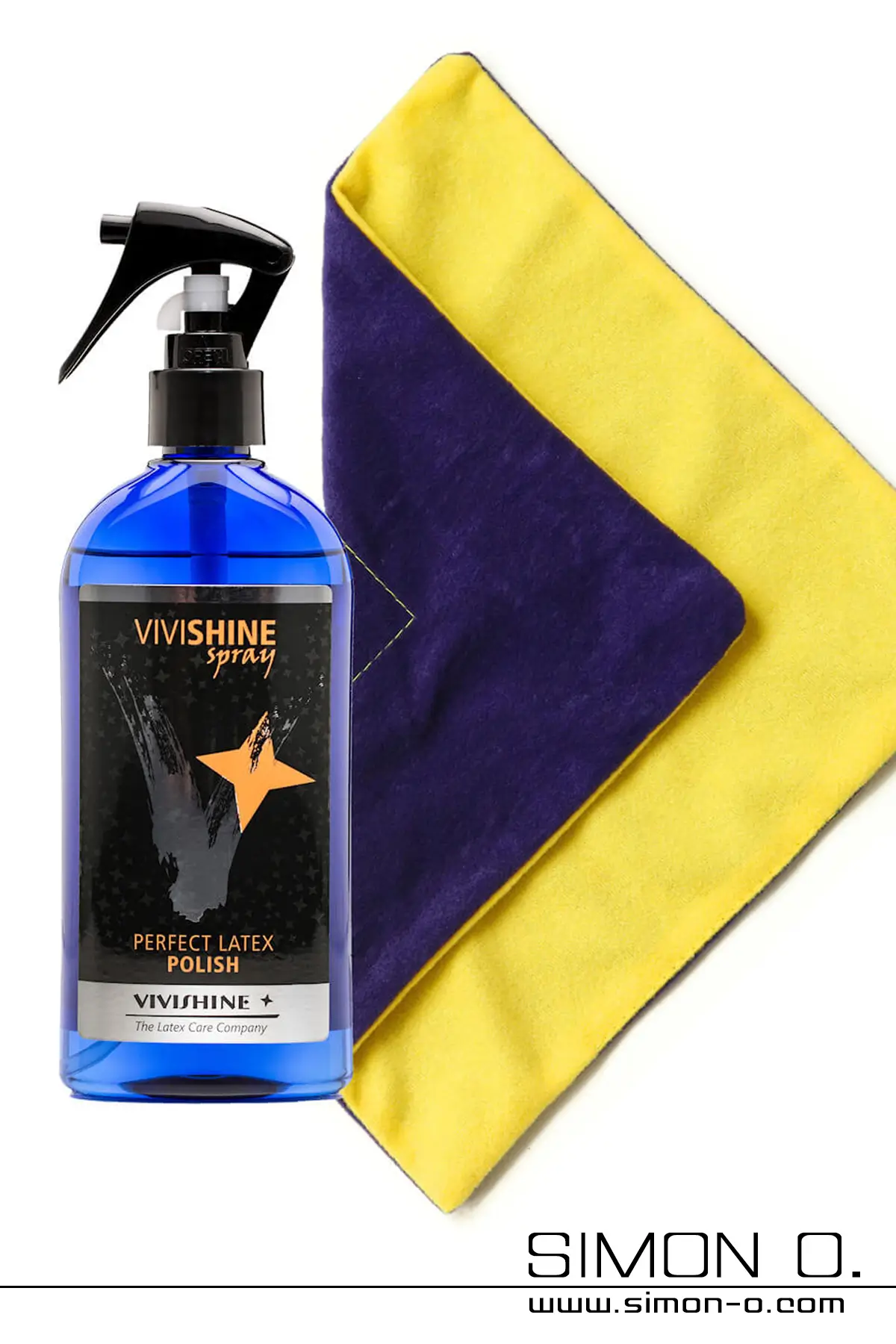
Vivishine Latex Polishing Set 250 ml + polishing pad
Content: 0.25 litre (£118.80* / 1 litre)
£29.70*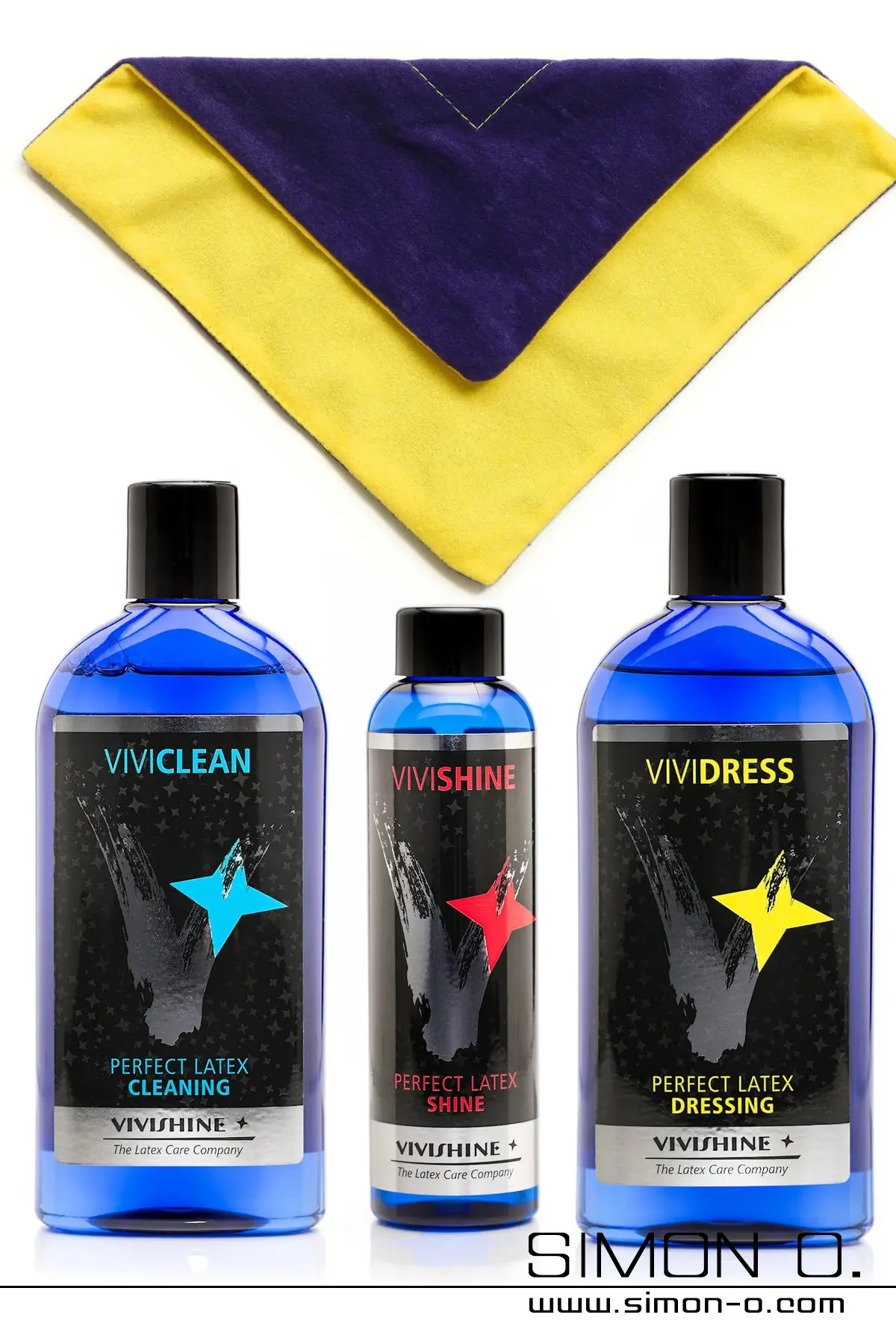
Vivishine Latex Care Set : dressing aid + shine + cleaner + wipe
£47.50*
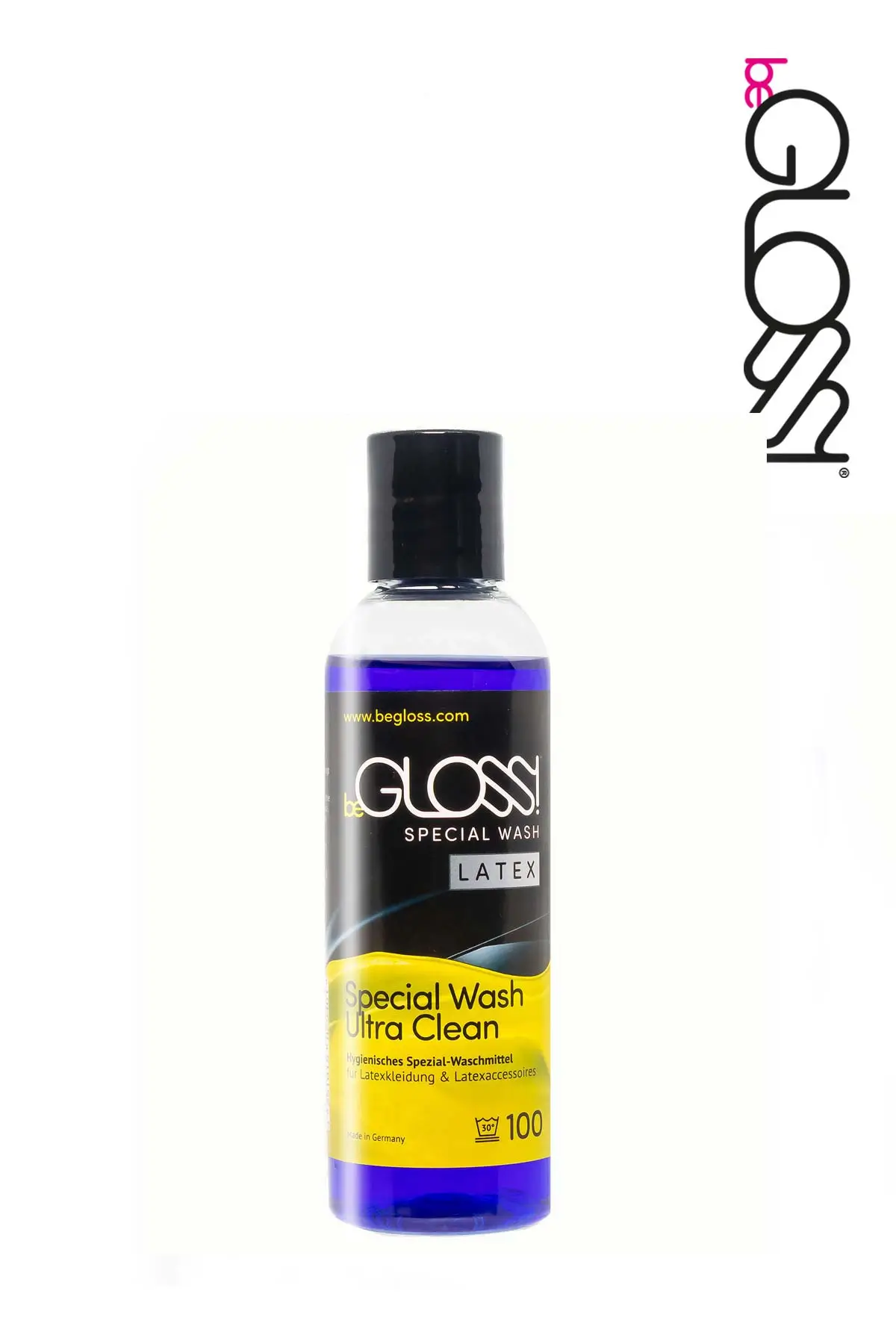
Clean and care for Latex 100ml - beGLOSS
Content: 0.1 litre (£76.00* / 1 litre)
£7.60*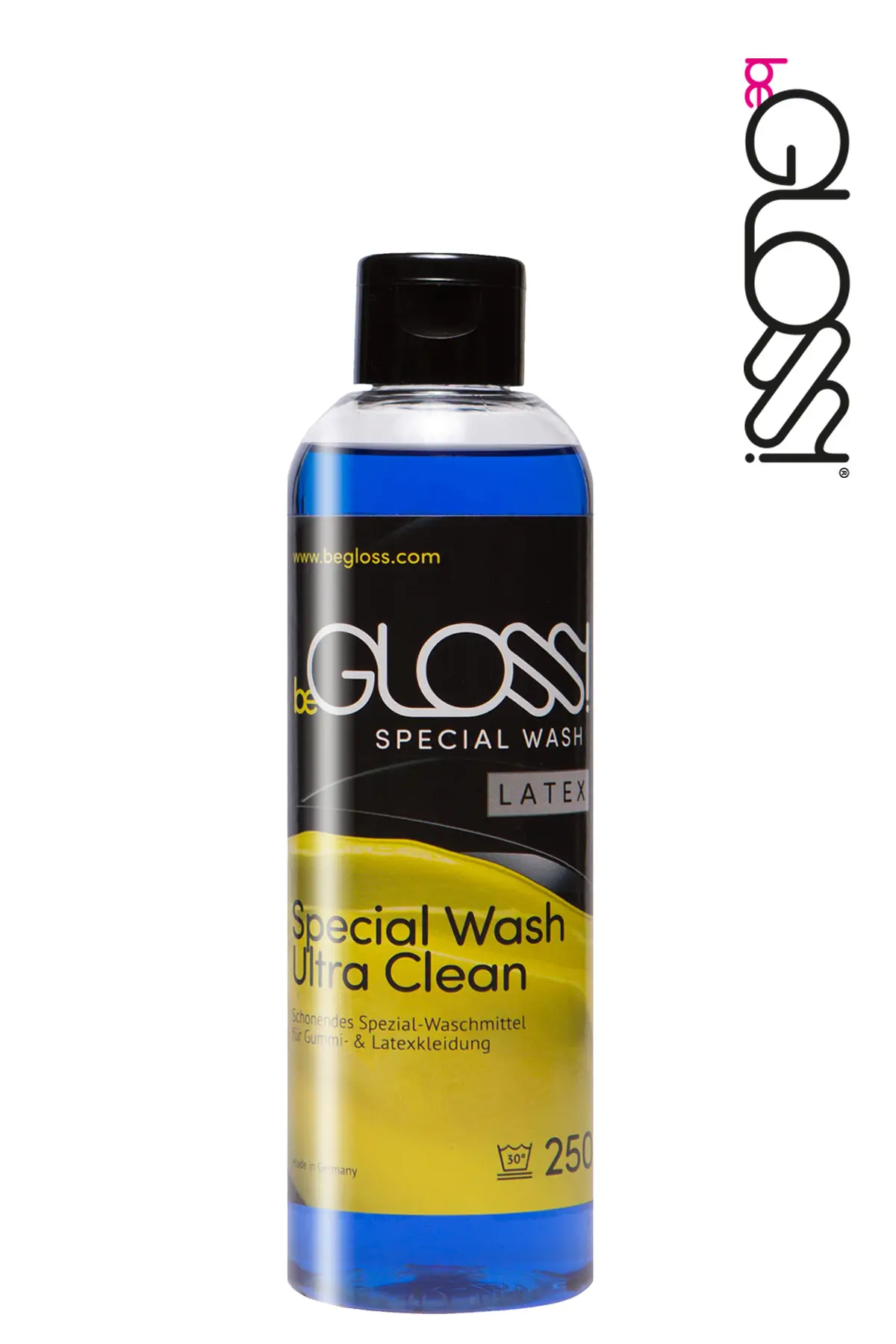
Clean and care for Latex 250ml - beGLOSS
Content: 0.25 litre (£44.00* / 1 litre)
£11.00*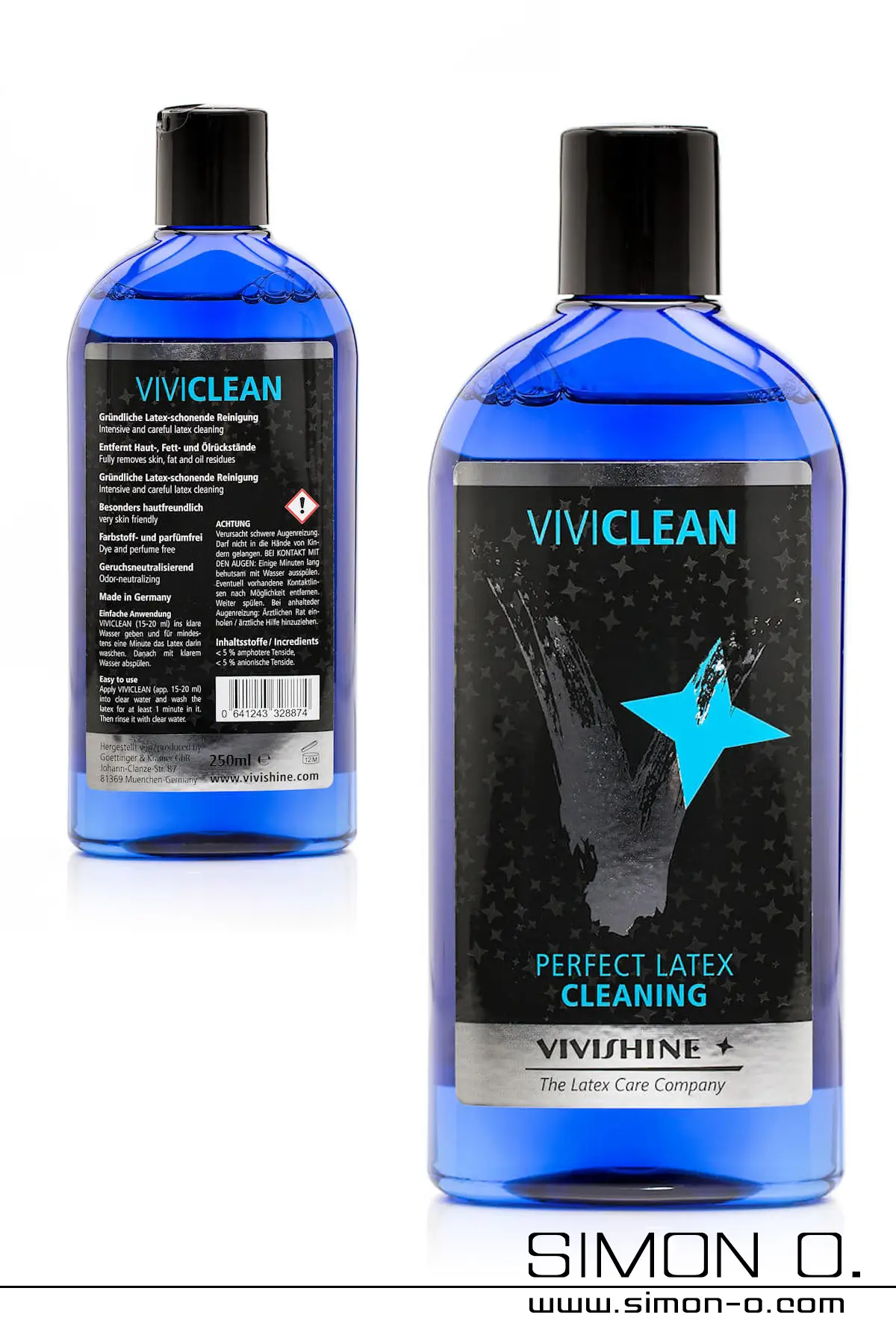
Washing lotion for latex and rubber gear
Content: 0.25 litre (£57.60* / 1 litre)
£14.40*
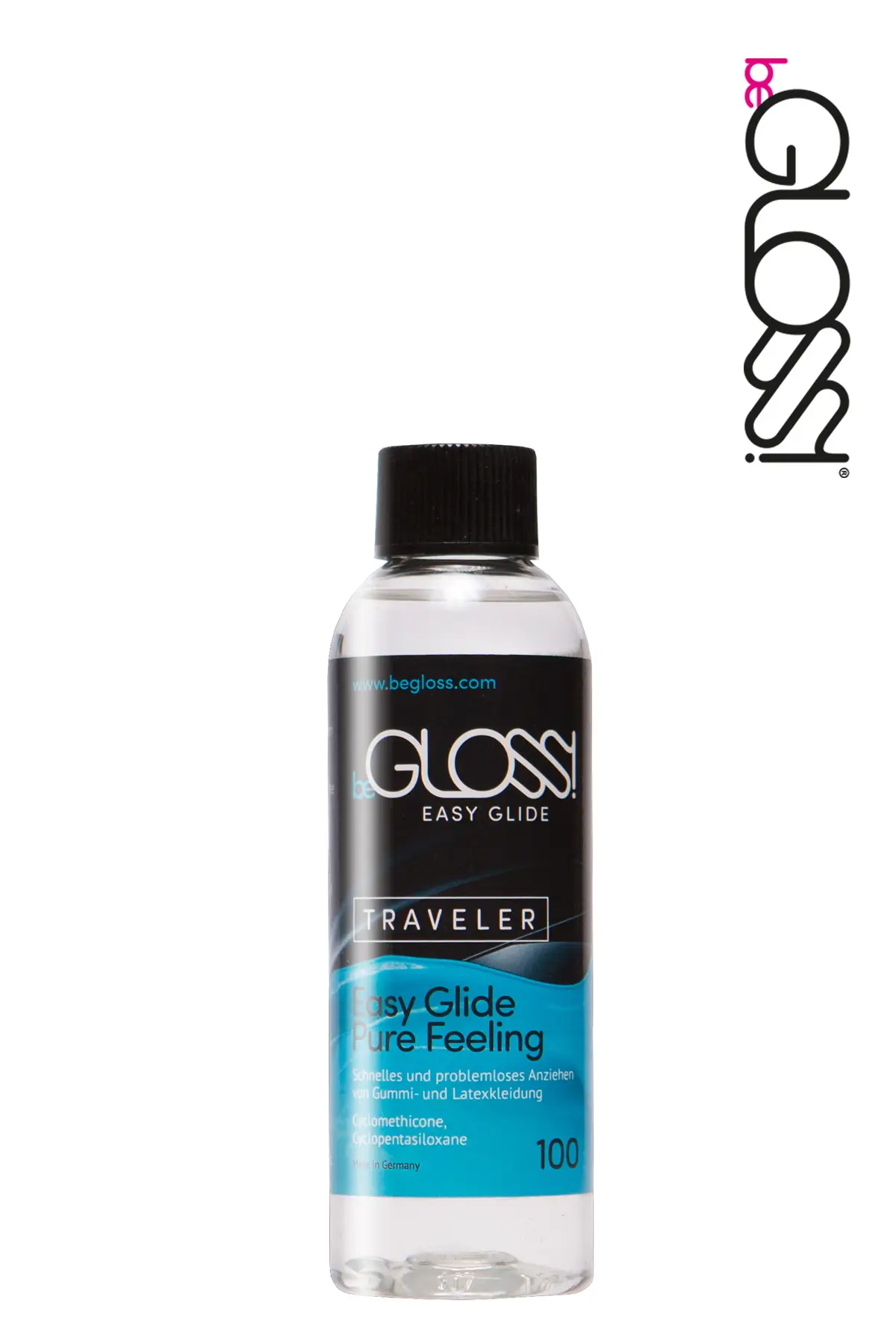
Latex dressing aid 100ml
Content: 0.1 litre (£84.00* / 1 litre)
£8.40*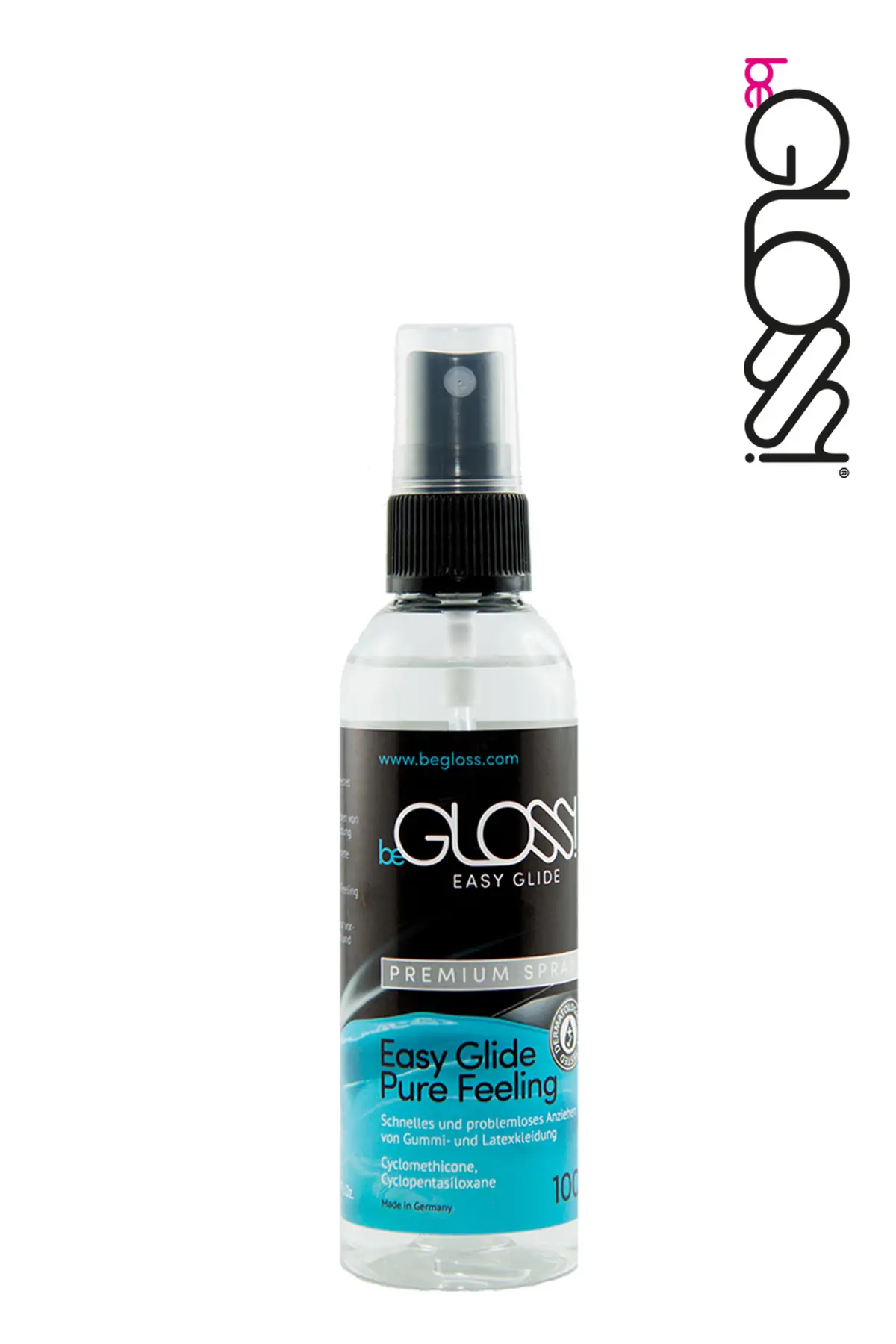
Latex dressing aid 100ml pump spray
Content: 0.1 litre (£110.00* / 1 litre)
£11.00*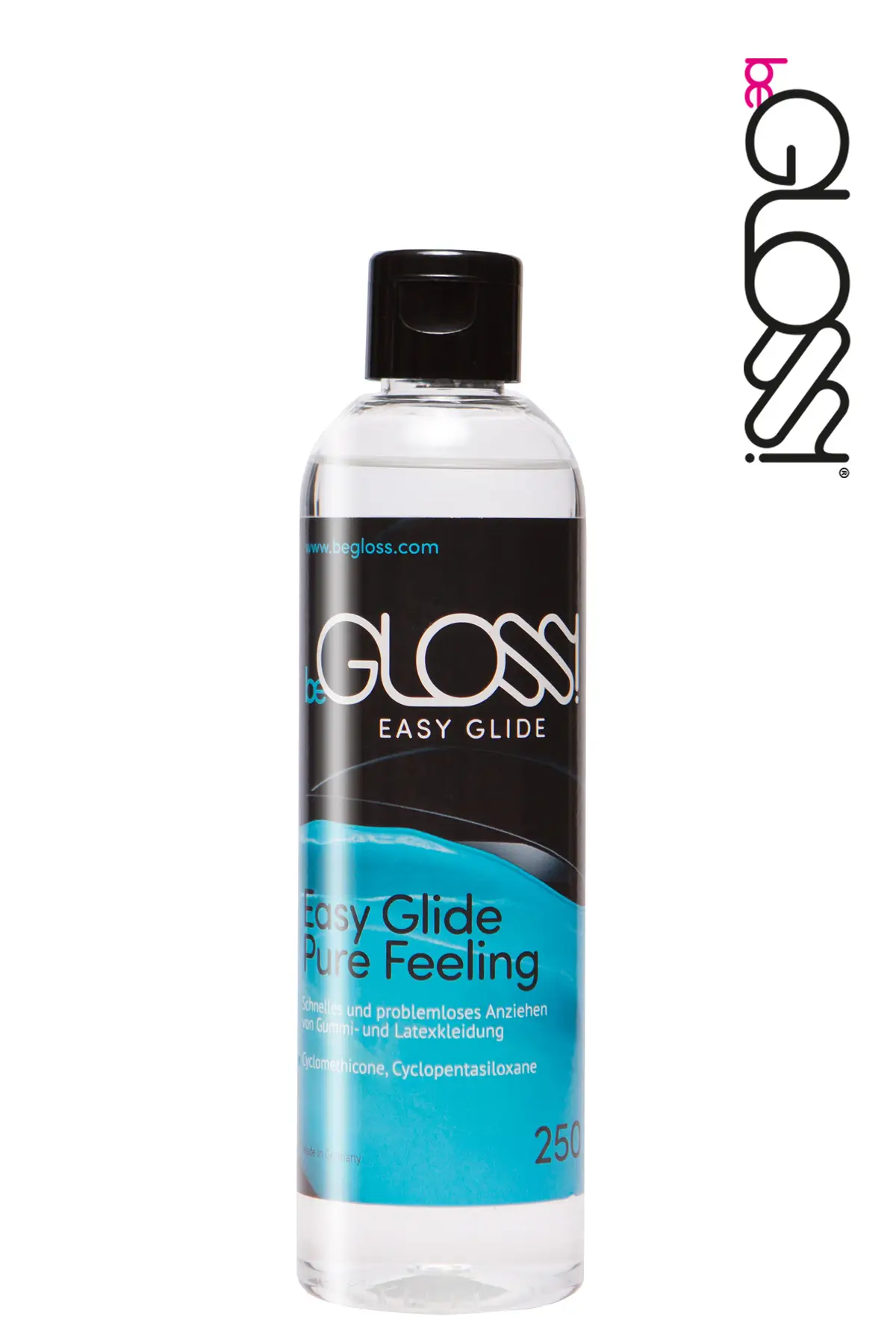
Latex dressing aid 250ml
Content: 0.25 litre (£67.60* / 1 litre)
£16.90*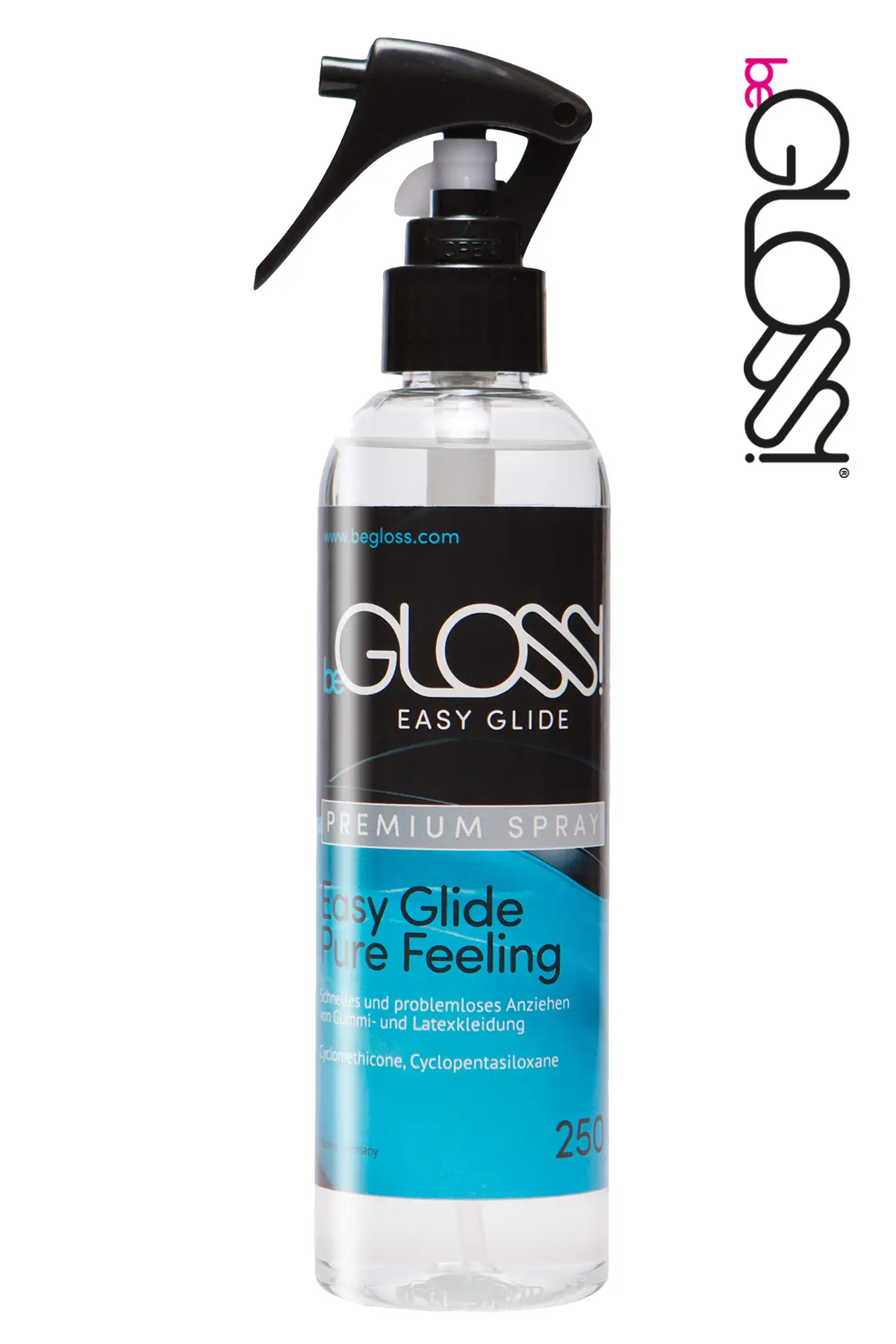
Latex dressing aid spray 250ml
Content: 0.25 litre (£91.60* / 1 litre)
£22.90*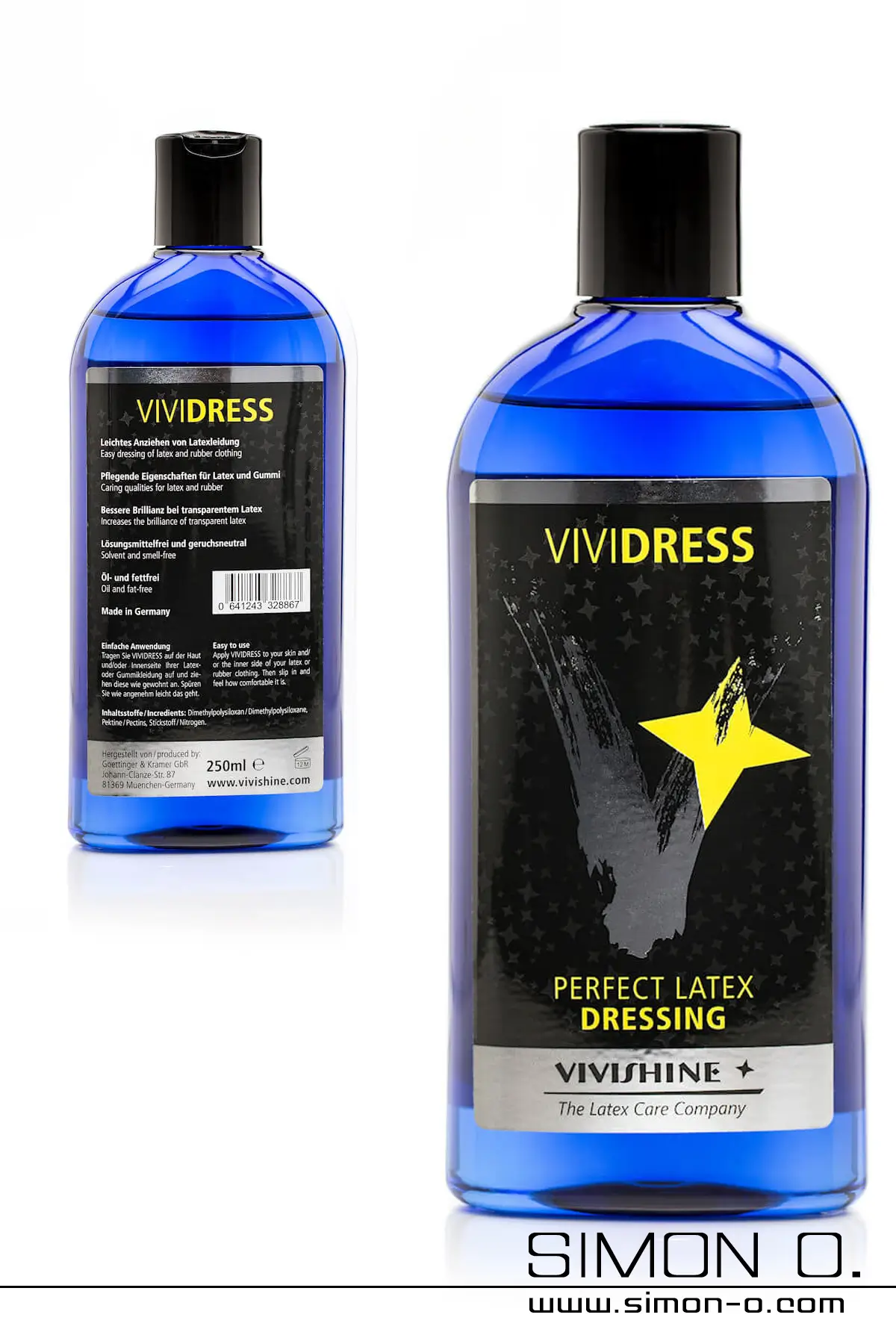
Latex dressing aid from Vivishine -250ml
Content: 0.25 litre (£74.40* / 1 litre)
£18.60*
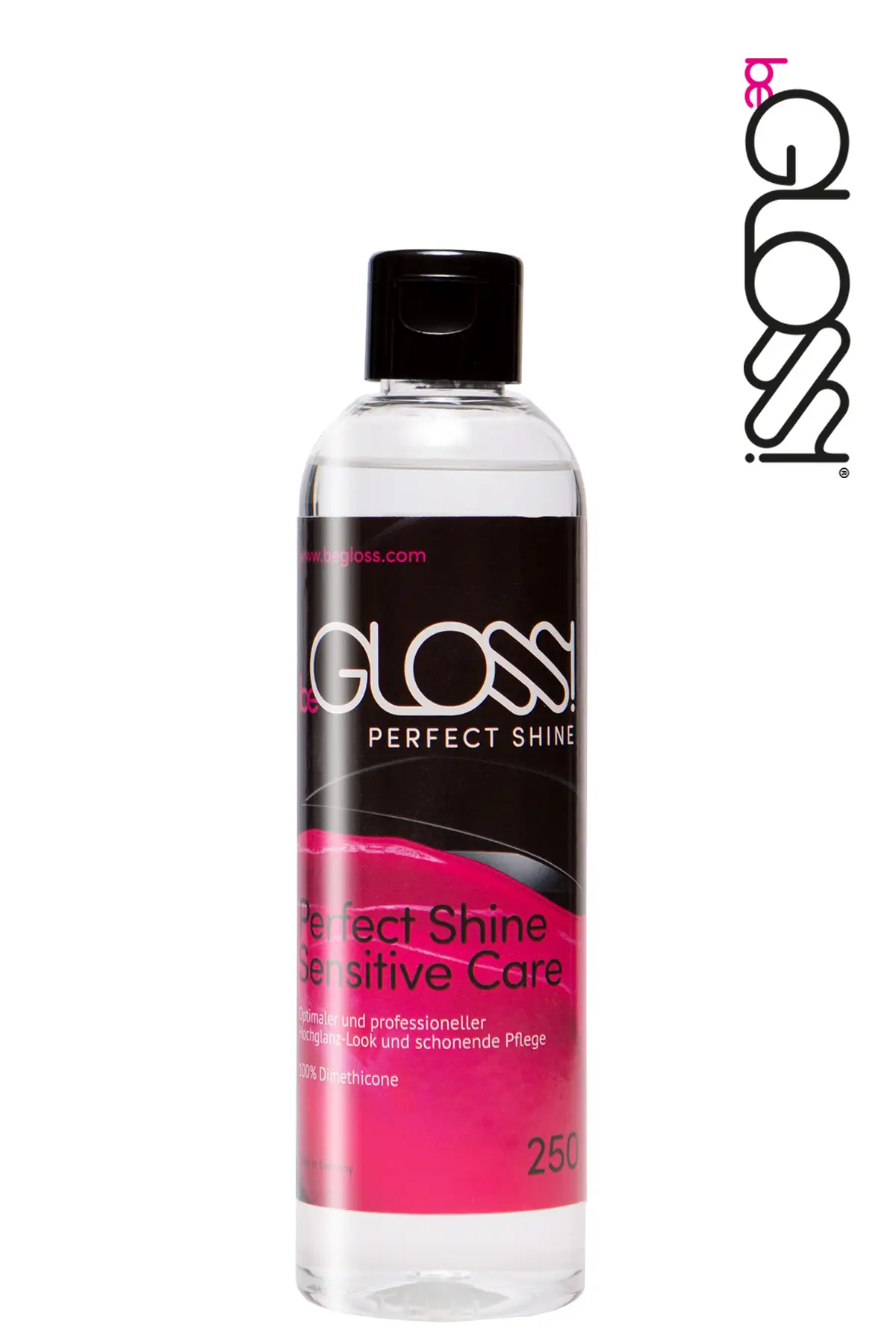
High gloss latex shine 250ml
Content: 0.25 litre (£67.60* / 1 litre)
£16.90*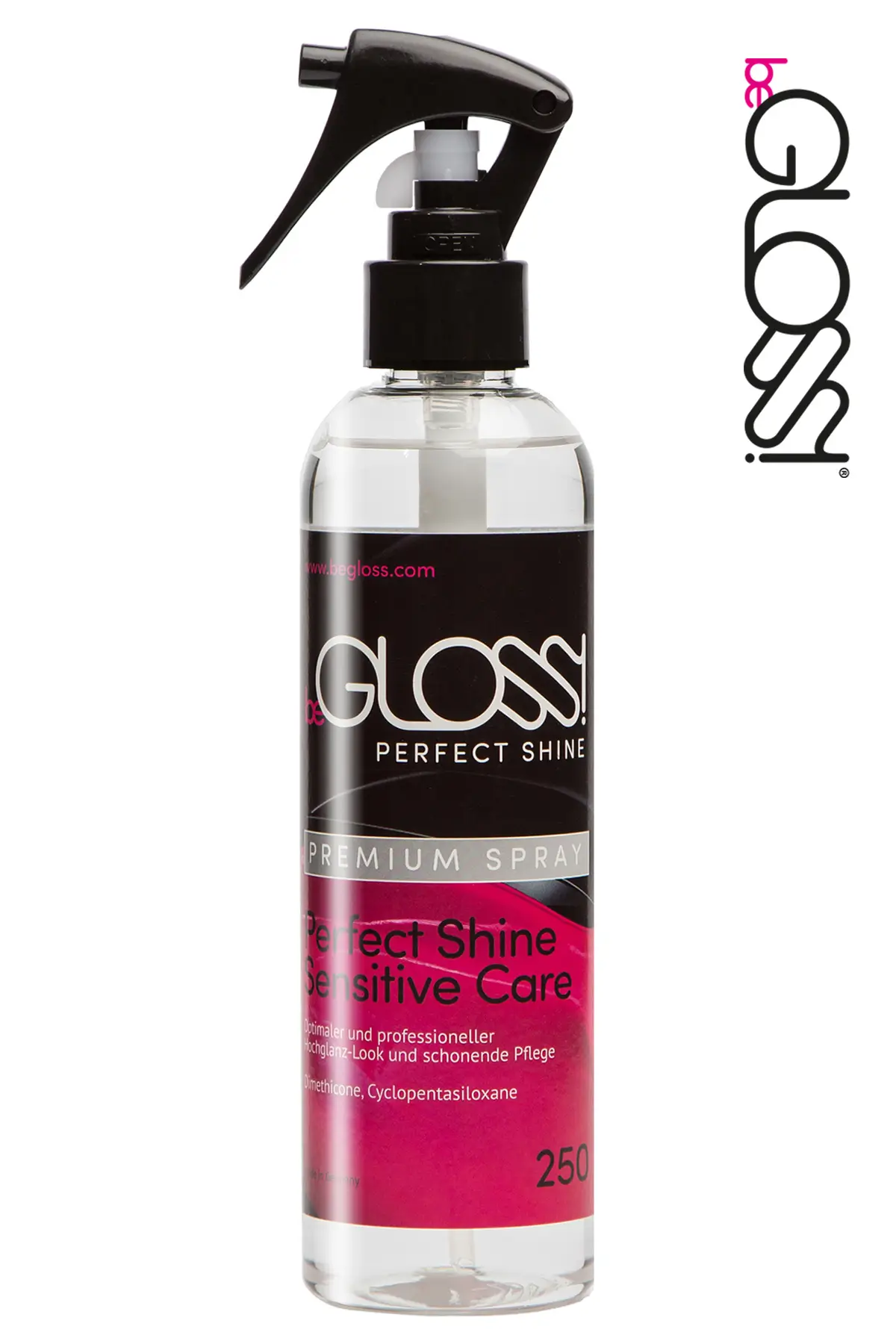
High gloss latex shine 250ml -Spray
Content: 0.25 litre (£91.60* / 1 litre)
£22.90*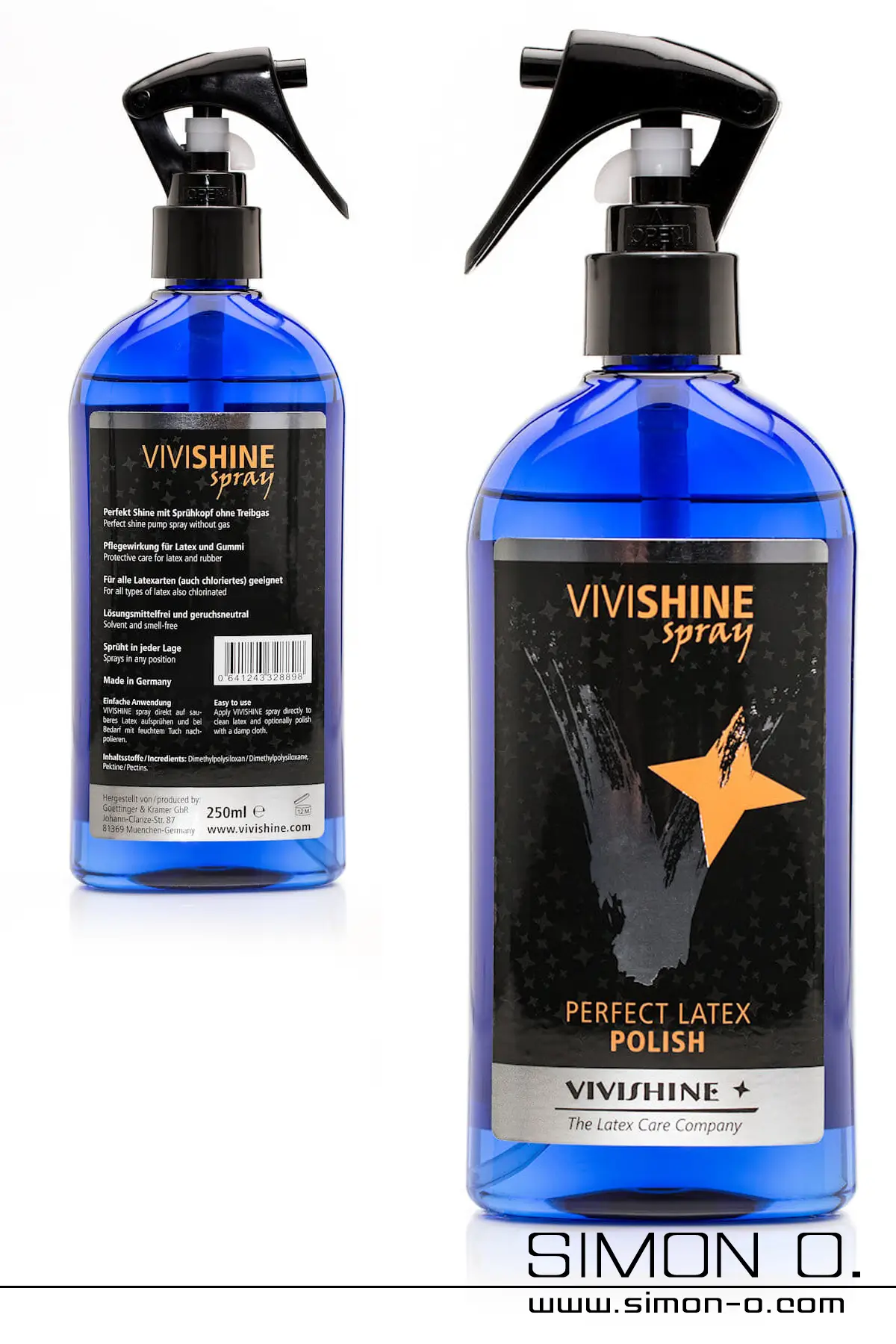
Vivishine -Latex high gloss spray 250ml
£24.60*
**Final prices may differ, due to possible recalculations in the shopping cart.
Bondage body with mittens and straps
This bondage body has attached mittens with straps. It is also possible to attach a latex mask to this model. The crotch area can either be zipped up or closed as shown.
Shown bondage body:
- Color: white
- Material thickness: 0.40 mm
- Crotch area: closed
Size charts for latex clothing
The size charts given here are intended as a guide to help you choose the right size for your latex clothing. All sizes are in cm! For information and conversion for our customers with other units of length: 1 inch = 2.54 cm.
The standard sizes of the ready-to-wear sizes for women are based on the average height of a woman from 165 to 175 cm.
The standard sizes for men's clothing sizes are based on the average height of a man from 175 to 185 cm.
Women´s top
| Women | XS-34 | S-36 | M-38 | L-40 | XL-42 | XXL-44 | XXXL-46-48 |
|---|---|---|---|---|---|---|---|
| chest circumference | 78-84 | 84-89 | 89-94 | 94-100 | 100-105 | 105-112 | 112-120 |
| lower breast | 65-70 | 70-75 | 75-80 | 80-86 | 86-92 | 92-98 | 98-106 |
| waist | 57-64 | 64-70 | 70-75 | 75-83 | 83-94 | 94-100 | 100-110 |
| upper arm | 22-24 | 24-26 | 26-28 | 28-30 | 30-32 | 32-34 | 34-36 |
Chlorination of latex clothing
Experience the awesome wearing comfort of our latex clothing by choosing the chlorinated version. Chlorination has nothing done with the shiny surface of the material.
Advantages are simple and clear:
Quick dressing without aid
Chlorination makes the surface smooth and silky. The latex slides on your skin and can be put on without any aid like silicone oil or talcum powder. Therefore chlorinated latex is especially suitable for clothes that are very large and laborous to put on - for example latex catsuits. The effect unfortunately disappears if the skin is clammy or if the skin was previously creamed.
No sticking-together
The latex clothing does neither stick together in the wet state nor in the dry state. This can spare your nerves and faciliate the handling. It is possible to polish the clothes in a tumble dryer using cold air and a soft towel. A basic shininess will appear. Despite this fact, a deep action care with silicone oil is strongly recommended.
Suitable for allergy sufferer:
Via chlorination latex can be conditioned to be suitable for allergy sufferer or to be more suitable than unchlorinated latex. This can be explained with the deterioration of the allergenic protein that is encased in the latex.
Increased life period
Untreated latex features so-called double bonds among the carbon backbone of the material. These bonds can be recognized as "docking site" for radicals which can strongly damage latex or decrease the longevity. During chlorination up to 70% of these double bonds are removed and the chemical durability of your rubber is increased.
But there are also a few disatvantages:
Repairs difficult / impossible
The biggest disadvantage: Only thick latex garments can be sometimes repaired in a satisfactory way by the „grinding method“.
Change of haptics
The material becomes thougher and stiffer. At the beginning the effect can be clearly felt, but over time and by wearing the material it will become softer. Due to the changed haptics the material appears to be of higher thickness than comparable, untreated rubber. A thin catsuit made of 0.25 mm latex will be perceived like a catsuit made of 0.35 mm latex.
Chlorination of latex clothing
More and more customers are asking us about the advantages and disadvantages of chlorinating latex clothing and whether a latex catsuit or other latex garments can be chlorinated independently. You can often find instructions for self chlorination on the internet, but these are often not chemically correct in the necessary depth and contribute negatively to the circulating half-knowledge about the chlorination process.
For these reasons, we would like to explain the advantages and disadvantages of chlorinating latex clothing in detail and provide you with useful, correct instructions for chlorination. In order to better understand the process of chlorination, it is useful to first take a look at the production and chemistry of latex, at least in simplified terms. Readers who are less interested in history and science can of course skip the relevant sections...
1. Latex - from the tree to the chlorinated latex catsuit
Latex, or more precisely rubber, is a natural product and has come a long way to reach your closet. Rubber trees (hevea brasiliensis) are cultivated on large plantations in Malaysia, India or Brazil and their bark is scratched using a special technique to obtain the white latex sap from the rubber tree. This so-called latex milk contains up to 20% natural rubber. To extract the rubber (Indian cao 'tree' and ochu 'tear'; together “tear of the tree”) from the latex milk, it is first thickened and the rubber is precipitated by adding diluted acetic acid and then dried. Annual production amounts to around 7.6 million tons and is spread across a total of 17 producing countries in order of rank.

Source (chart, table): Wikipedia (Handelsblatt 2005 - The world in figures)
However, the yellowish-colored natural rubber obtained in this way does not yet have any material properties. It is an extremely viscous mass, which slowly “melts” under its own weight during prolonged storage. This property is known as “viscoelasticity”. Latex clothing and countless technical applications of rubber were only made possible by vulcanization, which was discovered by Charles Goodyear in 1839. At a molecular level, rubber consists of very long hydrocarbon chains. These chains can move freely in relation to each other, giving rubber its viscous consistency. During vulcanization, the rubber is heated under pressure together with sulphur and other additives. The sulphur cross-links the chains with each other and in this way provides additional stability and in particular the elasticity of the resulting rubber (latex). The material properties can be precisely controlled via the sulphur content - the more sulphur, the harder and less elastic the resulting latex becomes. The easiest way to understand the material properties is by analogy with a rung ladder: The raw natural rubber corresponds to the loose bars of the ladder - without rungs, they can move against each other as required. During vulcanization, the sulphur acts like the rungs to connect the spars - the more rungs are installed between the spars, the more stable the ladder becomes. Very little sulphur is used in the manufacture of latex clothing. The result is a “wobbly” ladder with stiles that can be moved against each other or elastic latex (rubber) for your favorite clothing. The latex is produced directly in sheets and can then be bonded together using an adhesive that mimics the vulcanization process and securely bonds the latex layers together. In this way, we are also able to make clothing to measure for you - to the exact centimeter. If you want to put on perfect latex clothing particularly quickly, you should look into the chlorination of the material. In the following, we would like to tell you everything you need to know about the chlorination process and provide you with instructions for chlorination in a self-experiment.
Chlorinated latex clothing - advantages and disadvantages
Due to the wonderful wearing comfort, it is of course easy to be tempted to chlorinate your beloved latex suit, but treatment with chlorine does not only have advantages. For example, the surface of the latex changes in such a way that bonding becomes almost impossible, making repairs very difficult or even impossible. At this point we would like to point out that we have recently started offering one-sided chlorination (for models where this is possible).
Advantages:
Quick donning without aids
Chlorination makes the surface of the latex smooth and silky. The rubber glides on the skin and can be put on without the use of aids such as silicone oil or talcum powder. Chlorinated latex clothing is therefore particularly recommended for large items of clothing that are difficult to put on (e.g. latex catsuits). However, the gliding effect is lost if the skin is damp (sweating) or if cream has been applied beforehand.
Latex clothing does not stick together
Latex clothing does not stick together either when wet or dry. This saves stress and makes handling easier. It is possible to polish the clothing in the dryer with cold air together with a soft towel. This creates a basic shine. However, deep care, e.g. with silicone oil, is still advisable.
Latex clothing suitable for allergy sufferers
Chlorinated latex can be treated so that it is suitable or at least more suitable for allergy sufferers. This is due to the destruction of the allergenic protein that is trapped in the latex. However, the latex clothing should first be thoroughly soaked (for at least 24 hours).
Greater durability
Untreated latex has so-called double bonds within the carbon backbone of the material. These represent “docking sites” for radicals, which can permanently damage the latex and reduce its durability. Chlorination destroys around 70% of these double bonds and significantly increases the chemical resistance of the latex.
Disadvantages:
Chlorination is only suitable to a limited extent for some items of clothing
Larger items of clothing that have little tendency to “slip” are certainly favorites, such as latex catsuits, shirts or latex coats. However, stockings, miniskirts and short latex dresses can easily slip down due to the particularly smooth surface of the chlorinated latex (tip: fold the edge of the leggings over by about 10 cm and moisten with a little water. After folding back, the water acts as a bonding agent and the leggings will no longer slip). Of course, this method can also be used on other items of clothing. Normal (cotton) clothing over chlorinated latex also slips a lot. It is better to consider the belt if you do not want to stand outside.
Repair difficult/impossible
The biggest disadvantage: only thick latex clothing can be repaired satisfactorily using the “sanding method”.
The olfactory appeal is fading
Smell enthusiasts will have a hard time. The original smell disappears completely and is replaced by a new one. Especially a few days after chlorination, a residual chlorine odor is still perceptible - but this disappears completely. The new odor can be described as “industrial”. With thicker latex, the innermost layers of the latex are chlorinated only slightly or not at all. Here it is possible that a certain residual odor will penetrate to the outside. For the majority of chlorinated clothing, however, you should be prepared for the change in odor.
Change in feel
The latex becomes firmer and stiffer. Initially, this effect is clearly noticeable - the material becomes softer again with prolonged wear. Due to the change in feel, the chlorinated latex appears subjectively thicker than comparable, untreated rubber. A thin latex catsuit made of 0.25 mm latex, for example, feels as if it were made of 0.35 mm latex.
Complete chlorination: all aspects at a glance
| Advantages | Disadvantages |
|---|---|
| Dressing without aids | Complications with some items of clothing (e.g. stockings) |
| Clothing does not stick together | Repair difficult / impossible |
| Suitable for allergy sufferers | Changed odor |
| Greater durability / resistance | Changed haptics |
| Easier to clean than unchlorinated latex |
NEW - one-sided chlorination (SSC) - All aspects at a glance
| Advantages | Disadvantages |
|---|---|
| Dressing without aids | Slightly different odor at first (disappears with time) |
| Clothing does not stick together | More complex and therefore somewhat more expensive |
| Suitable for allergy sufferers | |
| Greater durability / resistance | |
| Easier to clean than unchlorinated latex | |
| Visible repair possible from the outside | |
| Particularly pleasant grip |
3. invisible changes - do I still wear latex?
The following section is intended more for amateur chemists or particularly interested readers. In order to answer the question posed in the title, we need to take a brief look at latex on a chemical, i.e. molecular level. Rubber is a bio-polymer, which is made up of so-called isoprene monomers (basic building block). In rubber, around 30,000 isoprene molecules are linked together to form long chains. The linkage is symbolized by a small index “n” (n = 30,000).



What is soft chlorination?
Some manufacturers offer soft chlorination. There is actually no such thing as real soft chlorination - it is merely incomplete chlorination, the results of which are often unsatisfactory and cannot be compared with real chlorination. Chlorination is only correct and complete when all reactive binding sites in the material have been “saturated” with chlorine. Sometimes the latex clothing still sticks and a donning aid is necessary. In addition, the soft-chlorinated latex tends to release the chlorine again when exposed to sunlight or high temperatures. This process is very slow and not dangerous but always annoying.
4. instructions for chlorination & safety instructions
Now to the actual core business - chlorination itself. This requires a number of chemicals, which can pose various hazards if handled incorrectly. For this reason, it is advisable to follow the following instructions exactly and to carefully observe the safety instructions given.
Materials required
- Sodium hypochlorite solution (14%)
- Sodium carbonate (Soda)
- 2x plastic buckets (PE, PP oder PTFE)
- Chemical protective gloves (butyl rubber)
- Safety goggles
- Gas mask with activated carbon filter
- Possibly old clothing or apron/gown
Safety instructions:
Note on the safety data sheets: The data sheets contain descriptions of the substances and their hazard potential. However, the data refer to industrial tonnage. When chlorinating latex, we work with very small quantities and chlorination can be regarded as harmless if the regulations are strictly adhered to and the specified protective clothing is used. The safety data sheets are provided for the sake of information and completeness.
Implementation:
Due to the toxicity and corrosive effect of the chlorine produced, the experiment should only be carried out in rooms with good ventilation and wearing respiratory protection (gas mask)!
The following description is for the chlorination of a complete latex catsuit. Depending on the amount of latex, the quantities must be adjusted accordingly.
First clean the latex to remove any silicone oil, dirt or adhesive residue. For a good result, the suit should be thoroughly cleaned with a mild detergent. Now fill both buckets with 5 liters of water each. The first bucket is used for chlorination, the second for washing off the reaction mixture after chlorination. Using a measuring cup, fill 120 mL of sodium hypochlorite solution (14%) and pour the solution into bucket 1. Now place the latex catsuit in the bucket and roll it in the solution so that it comes into even contact with the sodium hypochlorite solution. Now fill 20 mL of hydrochloric acid (30%) and pour the acid into bucket 1. This may cause a brief steaming (do not be alarmed). As soon as the hydrochloric acid has been added, chlorine gas is formed, which begins to react with the latex.
DO NOT INHALE! DANGER TO LIFE!
Now soak the latex evenly in the reaction solution for 3 minutes and turn it frequently. During this time, most of the chlorine will react with the latex. To achieve an optimum result, leave the garment in the mixture for a further 1-2 minutes, whereby you can omit the rolling of the latex, as an even basic chlorination has already been achieved and only a small amount of chlorine is still incorporated into the latex. Now remove the chlorinated latex catsuit and place it in bucket 2, turning it several times and rolling the catsuit in the clear water. This will remove most of the reaction mixture and excess chlorine. Remove the catsuit from bucket 2 and wash it thoroughly 3 more times, e.g. in a sink. Change the water after each rinse cycle. Excess chlorine is now safely removed from your clothing. Adding detergent during washing can help to remove the chlorine odor more quickly. Now hang your latex catsuit up to dry as usual. The reaction mixture in bucket 1 must now be disposed of. To do this, add a tablespoon of sodium carbonate to the mixture until no more hissing or foaming of the mixture can be observed. If this is the case, the solution is pH-neutral and can be disposed of down the sink without any problems. Due to the dilution, you can also simply dispose of the water from bucket 2 down the sink.
Wear the safety clothing listed above for all steps (gown/protector, gas mask, gloves). Ensure that no textiles come into contact with the reaction mixture, as this can bleach and decompose textiles.
Latex chlorination for allergy sufferers:
Under certain conditions, chlorinated latex is suitable for allergy sufferers. To do this, the latex clothing must be completely immersed in cold water for 24 hours and then washed out with fresh water. This procedure reduces the content of allergenic protein in the latex. The subsequent chlorination process almost completely destroys the protein. Due to the reduced allergen content, the chlorinated latex can also be worn by allergy sufferers. This process is already established for medical latex articles.
5. Sources of supply
- Salzsäure: Apotheke (teuer), Baumarkt (Bauhaus), eBay, Amazon
- Natriumhypochlorit-Lösung (Chlorbleichlauge): Drogeriemarkt (DanKlorix), eBay, Amazon
- Natriumcarbonat: Drogeriemarkt, eBay, Amazon
- Gasmaske m. Filter: MSA Auer GmbH, Dräger GmbH, www.mayer-ausruestungen.de
- Schutzbrille: Baumarkt, Universität (Chemie), Amazon













